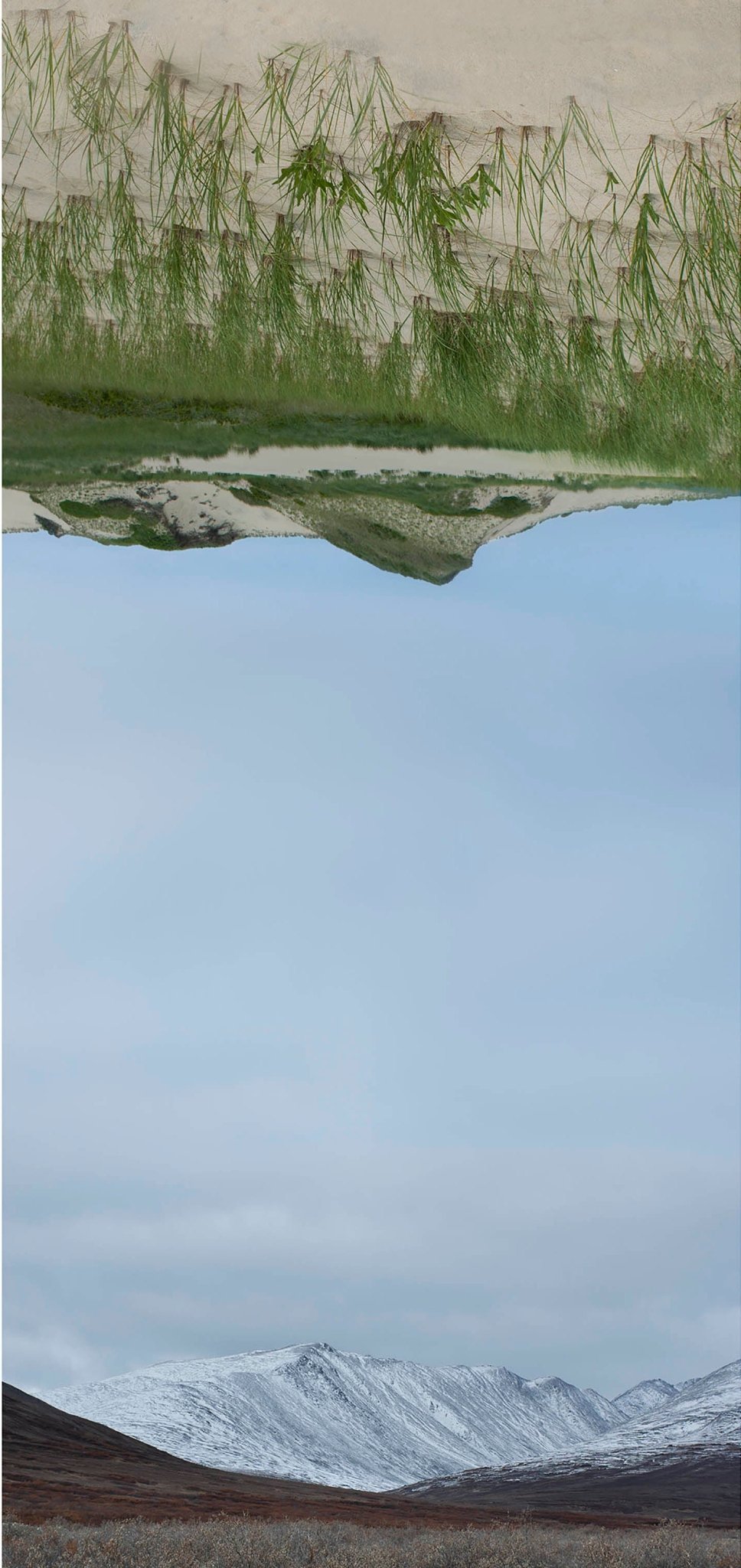Pipelines and Permafrost
Photographic Collage | 2020–Ongoing
Pipelines and Permafrost is a photographic collage series that explores fossil fuel infrastructure, geologic time, and climate justice through layered visual narratives. In each composition, pipeline grids, melting permafrost, glacial fissures, and extraction zones converge, collaged to resemble the stratified timelines of the Earth itself.
The series invites a gaze that is disoriented yet expansive. By blending images into geological flows, Mattingly resists documentary conventions and instead proposes a slow-time visual language that reflects the deep consequences of industrial extraction. These works center frontline lands in the Arctic and Equatorial zones while honoring Indigenous resistance and intergenerational care.
50% of proceeds from sales of this series support the Grassroots Global Justice Alliance, reinforcing the project’s commitment to collective action.
Project Details
- Years: 2020–Ongoing
- Medium: Photographic collage; pigment print on aluminum and archival paper
- Dimensions: Variable (most works approx. 60 x 10 in or 70 x 20 in)
- Representation: Robert Mann Gallery, New York
“In Pipelines and Permafrost, I wanted to explore what it means to see through the layers of Earth: to sense time not in seconds, but in strata. These collages are built from images of Arctic infrastructure and logging sites. Each one is a place that holds both violence and love, each one dedicated to someone fighting for climate justice. My goal wasn’t to document a landscape but to compose a timeline: to hold the tension between what’s melting and what endures. These pieces are a visual offering and a political one.” - Mattingly
Series Description
Each image in the series is constructed as a visual sediment: a layered field of permafrost cracks, oil pipelines, Arctic vegetation, atmospheric haze, and glacial ruptures. Mattingly uses compositional techniques that reject perspective and centerlessness, echoing the logic of natural systems rather than photographic order.
Works like Pipelines Crossing Permafrost connect infrastructural violence with geological precarity. A linear fissure in melting ice mirrors a pipeline suspended above, forming a single vertical axis across the image: one shaped by extraction, but also resistance. The work is dedicated to Neetsa’ii Gwich’in elder Sarah James, and her fight against oil development in the Arctic National Wildlife Refuge.
Throughout the series, Mattingly links these compositions to specific people and places. The works are both elegies and proposals; images that suggest not only what is being lost, but how to see differently. Viewers are invited to lose their orientation and confront the long history of Earth through homages to specific places.
Selected Works


Press + Writings
“Mary Mattingly’s geological images are stories of awareness and hope: a new perspective in which the language of art uses its codes to talk about climate justice and the protection of the planet.”
— Piermario De Angelis, Juliet, November 2021
“Mattingly’s photographs give me a peek and remind me that the effort of imagining deep planetary history is to respect the place we live, by accepting what we have done and turning to what we need to do, now.”
— Charlotte Kent, Brooklyn Rail, December 2021
“Mattingly’s landscapes take the literal and figurative long view of their own environmental modifications… Her columnar landscapes exude a geologic calm, gently askew, that feels something like the wisdom of accepting what one has the power to change and also what one doesn’t.”
—Louis Bury, Hyperallergic, December 2021
Impact + Partnerships
- 50% of proceeds from this series go to the Grassroots Global Justice Alliance, supporting frontline environmental and climate movements.
To inquire, contact Caroline at Robert Mann Gallery

